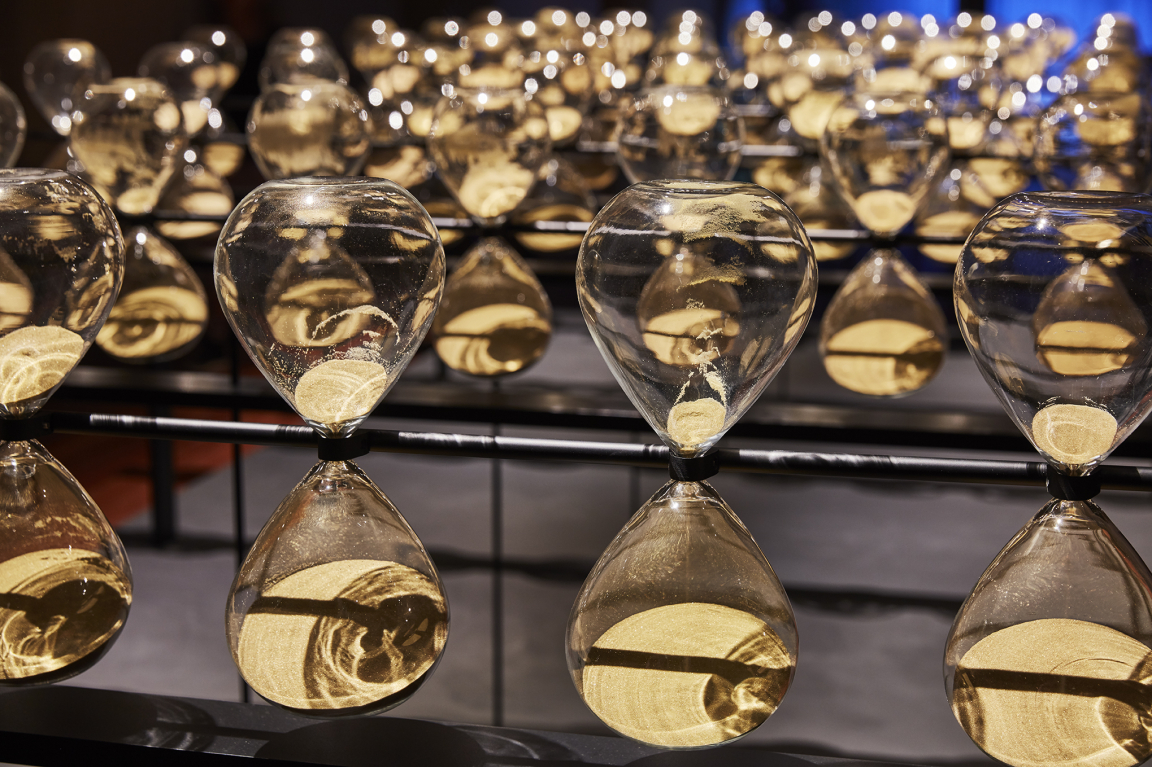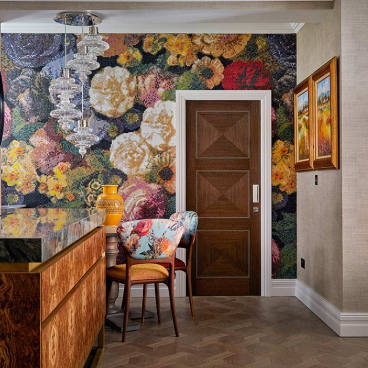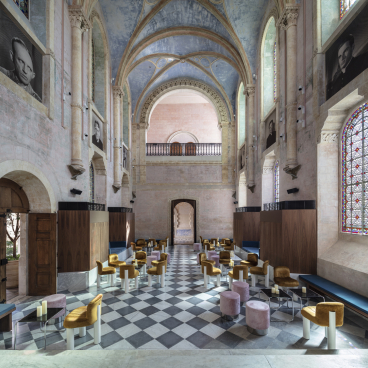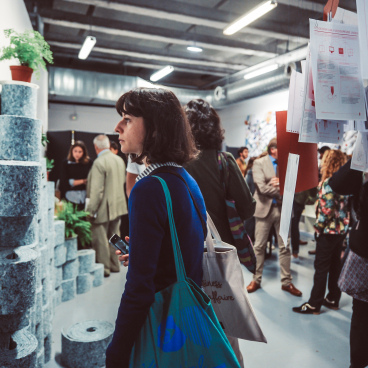Top picks from this year's London Design Biennale at Somerset House
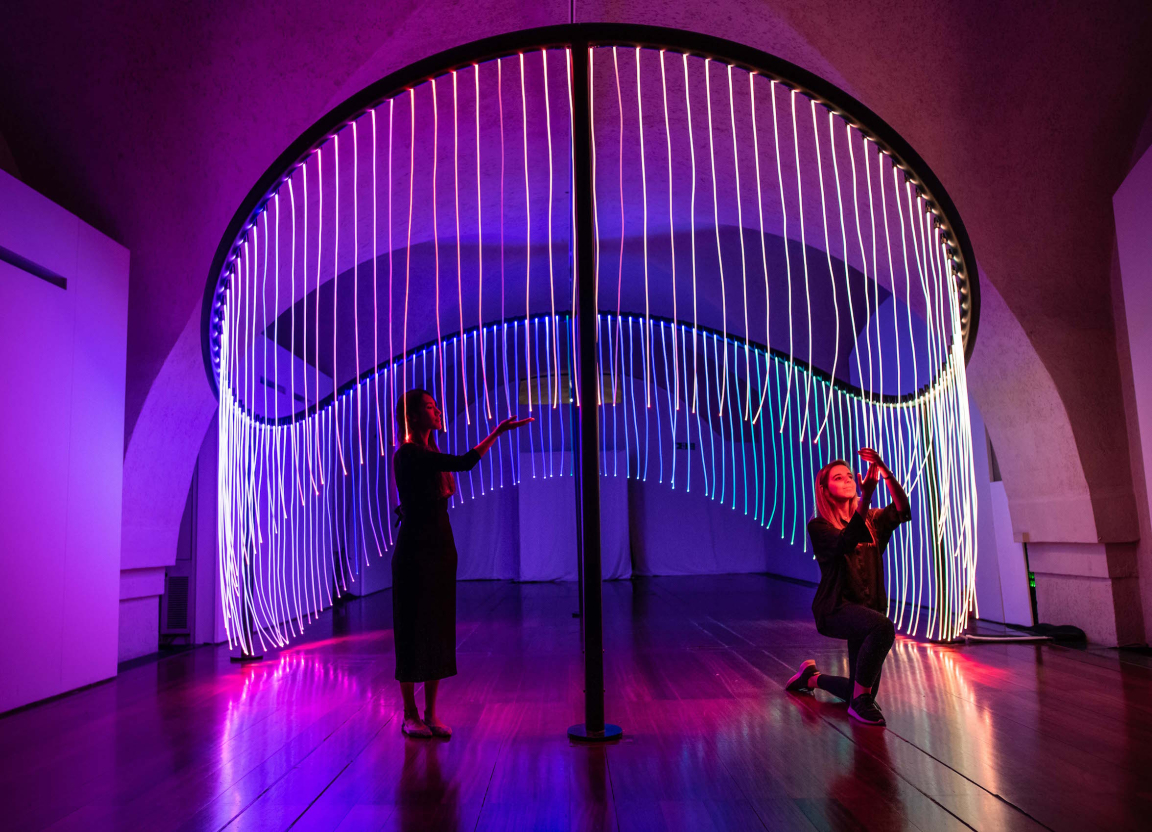
Full Spectrum by Flynn Talbot. All photography courtesy of Somerset House & London Design Biennale
Building on the success of the inaugural 2016 festival, 40 countries, cities and territories from six continents are taking part in the second edition of London Design Biennale, which is now open to the public at Somerset House and will run until 23 September.
A highlight on the global cultural calendar, the Biennale sees some of the world’s most exciting and ambitious designers, innovators and cultural bodies gather in the capital to celebrate the universal power of design, across this year's theme, "Emotional States".
These exhibits have been curated by some of the most distinguished museums and design institutions in the world – including the V&A; Cooper Hewitt, Smithsonian; Triennale, Milan; and Qatar Museums. They interrogate the ways in which design affects every aspect of our lives and influences our very being, emotions and experiences.
Together, the Biennale hopes to present an exciting laboratory of ideas that investigates the important relationship between design, strong emotional responses and real social needs. Here's what's on display.
The Impenetrable Forest – Argentina
A winding path leads into the "Impenetrable Forest" where you'll discover the traditions of Wichis and ponder on the timelessness of their crafts.
For a long time, El Impenetrable, located in the north of Argentina has been the home of the Wichis, one of the oldest ethnic groups of the region – experts in weaving geometric shapes as part of a very ancient sacred tradition of this native community.
The installation evokes the textures, sounds and scents of the forest in this rich region of Argentina and presents a celebration of an ongoing story of self-sustainability.
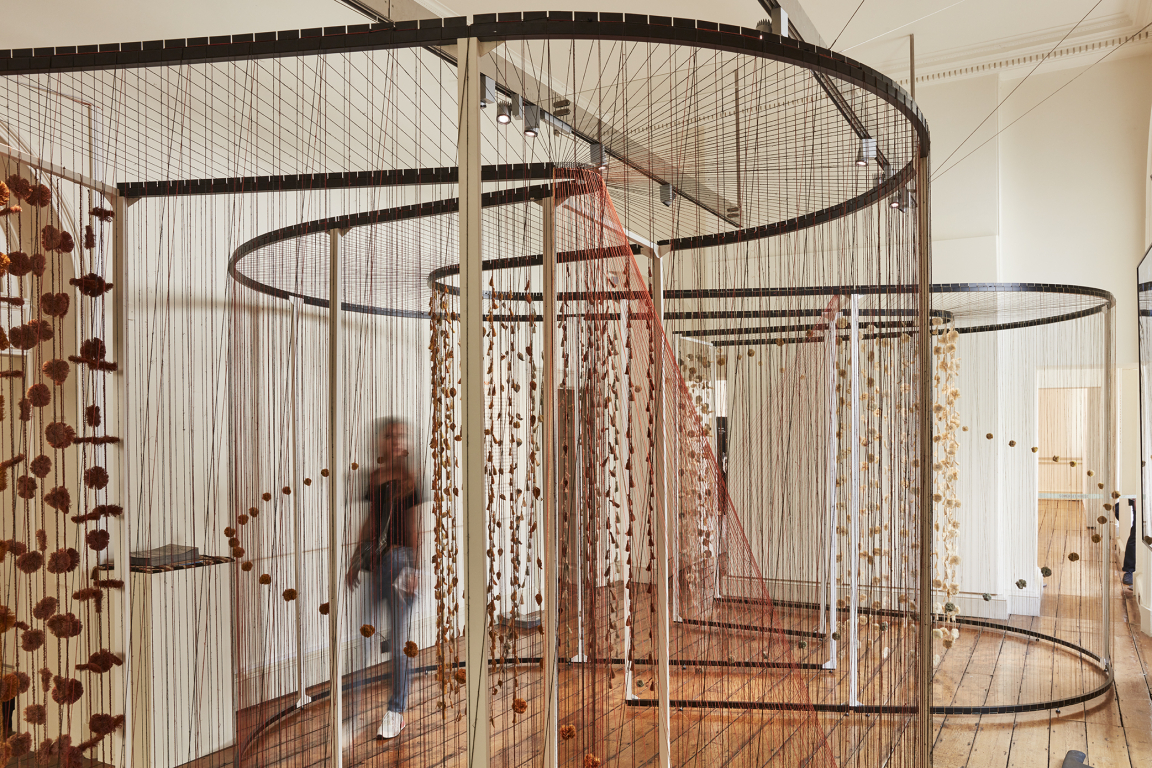
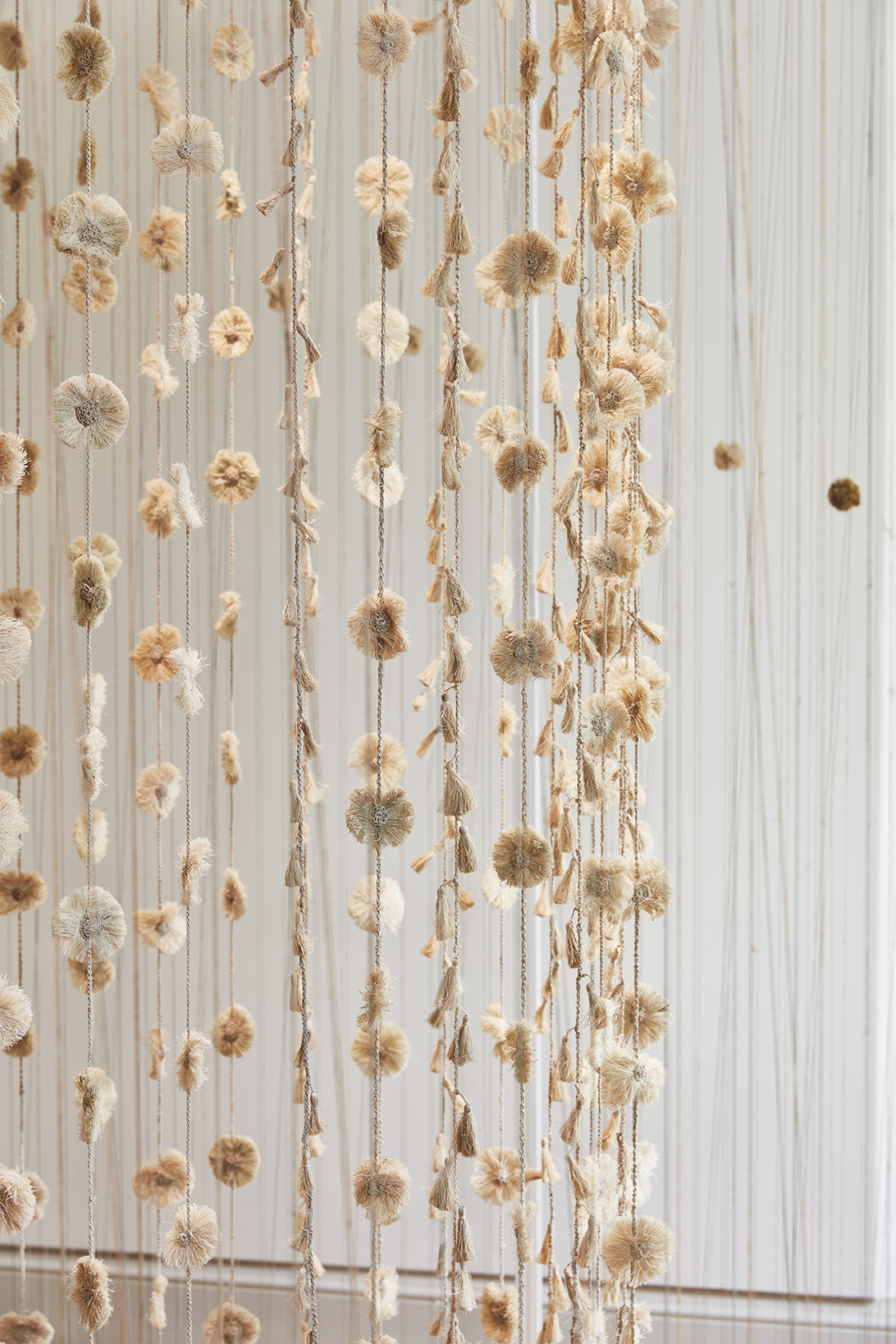
Full Spectrum – Australia
Flynn Talbot's rainbow-coloured full spectrum is a celebration of love, inspired by a new spirit of openness in his native country.
The inspiration for Talbot’s installation apparently came just before Christmas 2017 when, after a decade of bitter debate, Australia became the 26th country to legalise same-sex marriage. The designer has sought to capture something of this fleeting emotion in visible light.
You'll be presented with a circular, freestanding structure, from which hangs a rainbow-coloured light screen. The light screen is made from 150 strands of fibre- optic light, each one a different colour. You'll be able to touch and move through the light strands, feeling the coloured light in your hands, or you can simply stand within the space and be surrounded by a rainbow colour wash.
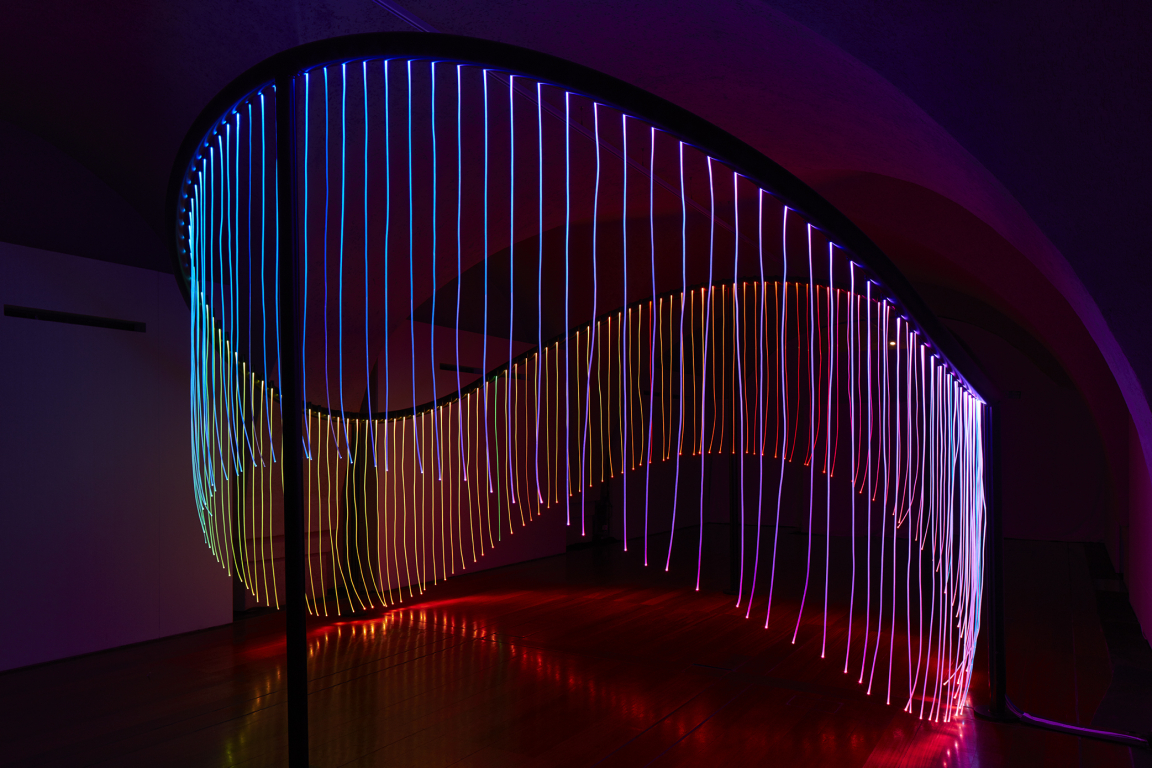
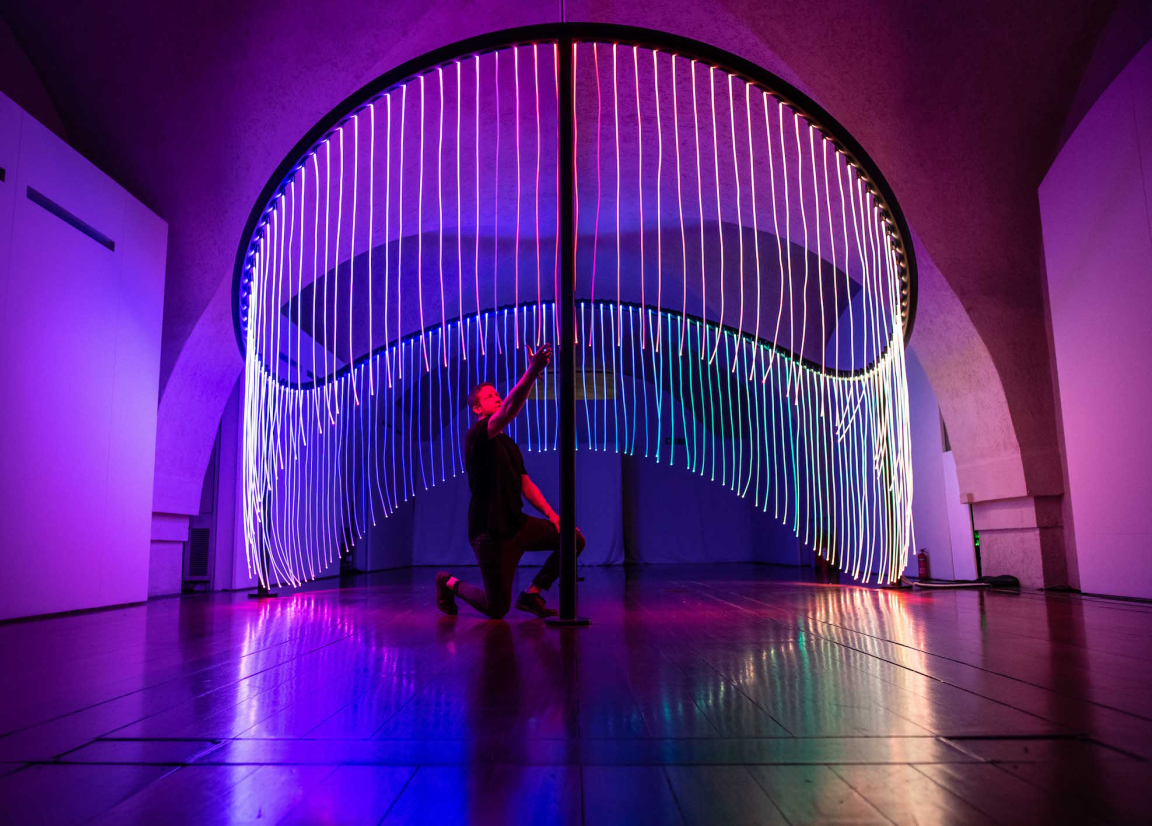
Desmatamento – Brazil
David Elia's Desmatamento captures the vulnerability of Brazil's rainforest and the emotional toll of its continuing destruction. Despite reductions in deforestation over the last 10 years, at the current rate, the Amazon rainforest will be reduced by 40 per cent by 2030. David Elia’s goal in creating the installation Desmatamento (or Deforestation) is not only to give voice to ecological anger but to share the beauty and emotional significance of the rainforest to Brazil.
You enter a room furnished with stools crafted from the branches of found Eucalyptus trees – a fast-growing species that is widely used in Brazil for reforestation. Because it is cultivated on a short rotation, the wood is produced sustainably, helping to preserve the native forests from logging. On the walls, a printed wallpaper evokes the breathtaking Mata Atlântica rainforest, immersing you in a fragile world.
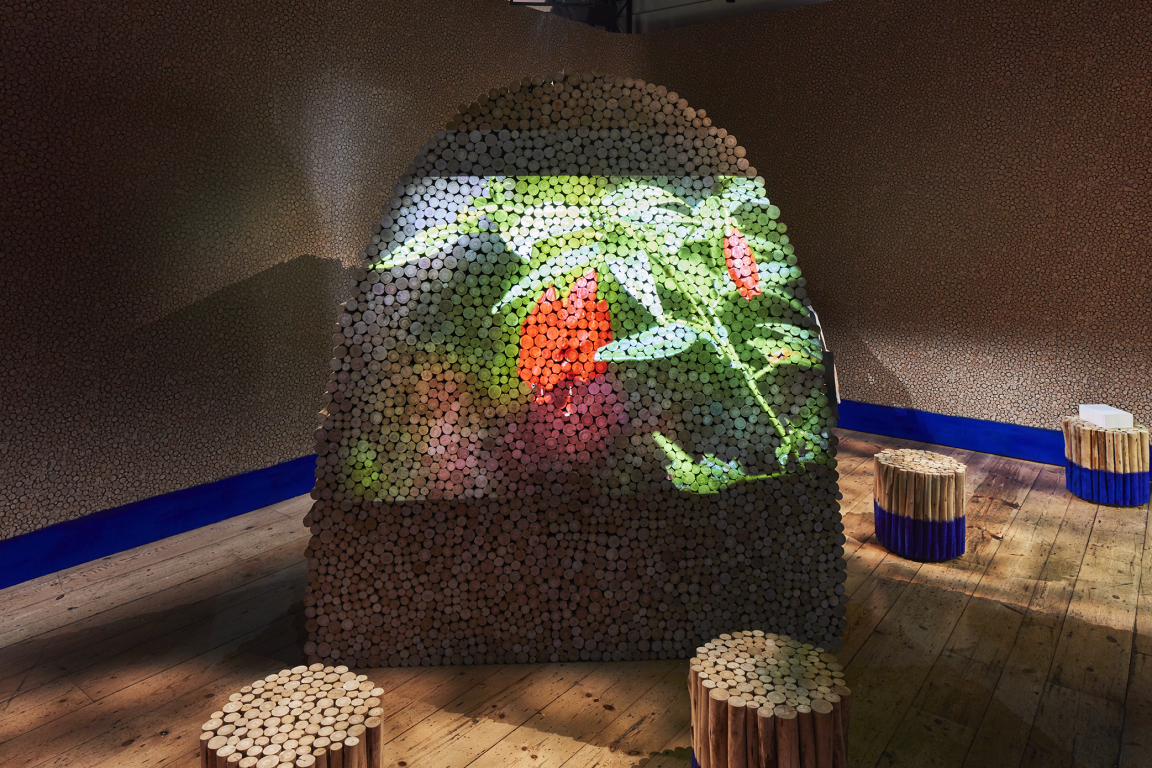
Disobedience – Greece
Studio Ini's installation, Disobedience, is a 17-metre long kinetic wall that challenges our perception of design and architecture as something static, or emotionally inert.
Disobedience has been used throughout history to describe the Greek temperament, from the cautionary tale of Icarus, to Antigone, to Prometheus, Greek mythology shows a hero who disobeys the gods yet obeys his moral obligation to humanity and creates an opportunity for its progress. It remains a potent theme for Greece at a time when the country is in the process of reinventing itself.
Scientists discover by disobeying the assumptions of predecessors, children learn by disobeying the boundaries of parents, designers create by disobeying the norm.
The installation explores this duality in the nature of disobedience. In the courtyard of Somerset House, you will be presented with an innocuous wall. As you step inside, this dynamic skin exes and morphs in response to your movements: you have transgressed a boundary, transitioning from an obedient spectator to disobedient actor.
The undulation and transformation of the structure – a steel spring skeleton built-up with recycled plastic – is experienced by both the "actor" and the audience in the courtyard. In addition, a dance performance produced by Farooq Chaudhry, founder and producer of Akram Khan Company, and choreographed and performed by Dickson Mbi, will be broadcast to the public, bringing the piece to life.
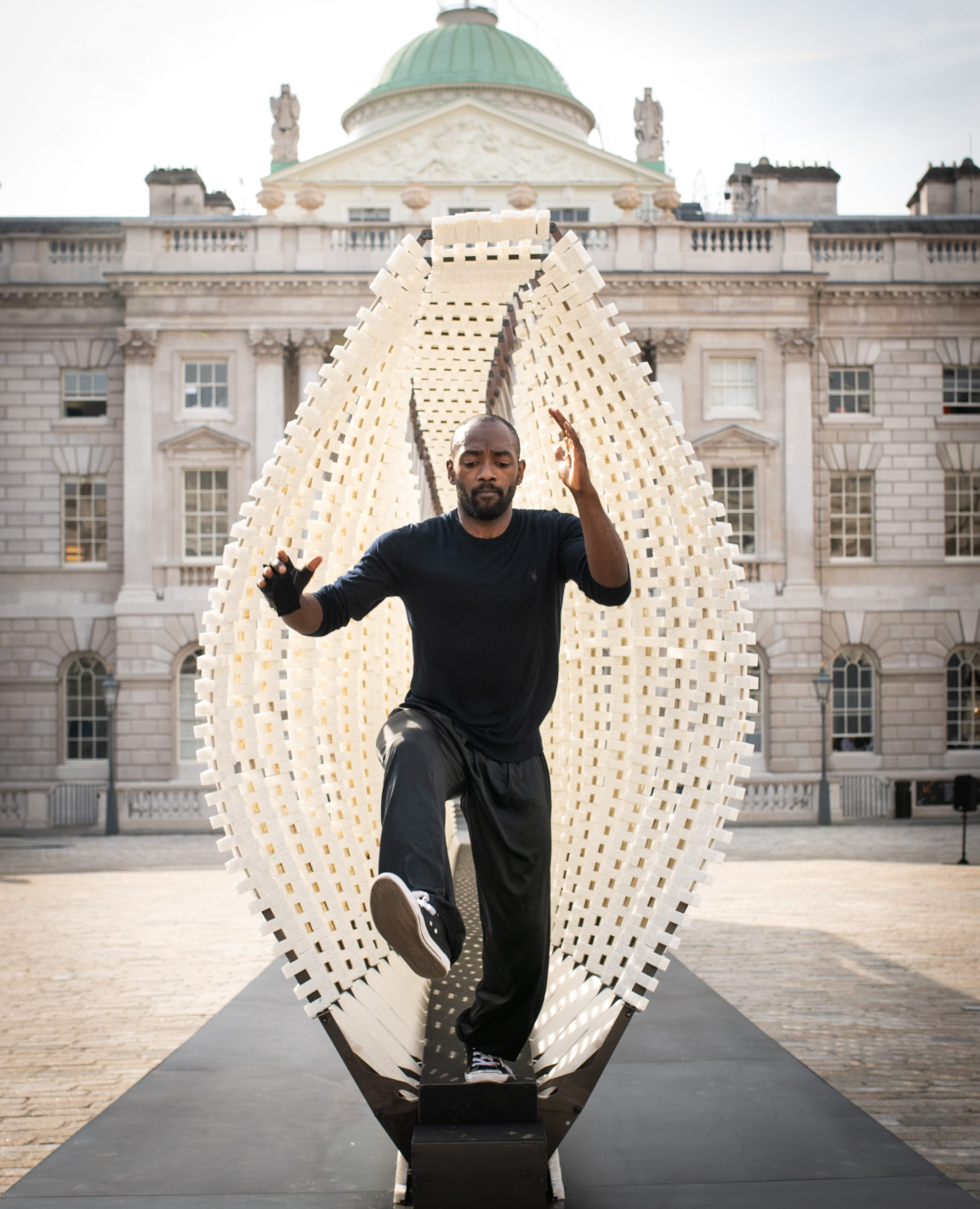
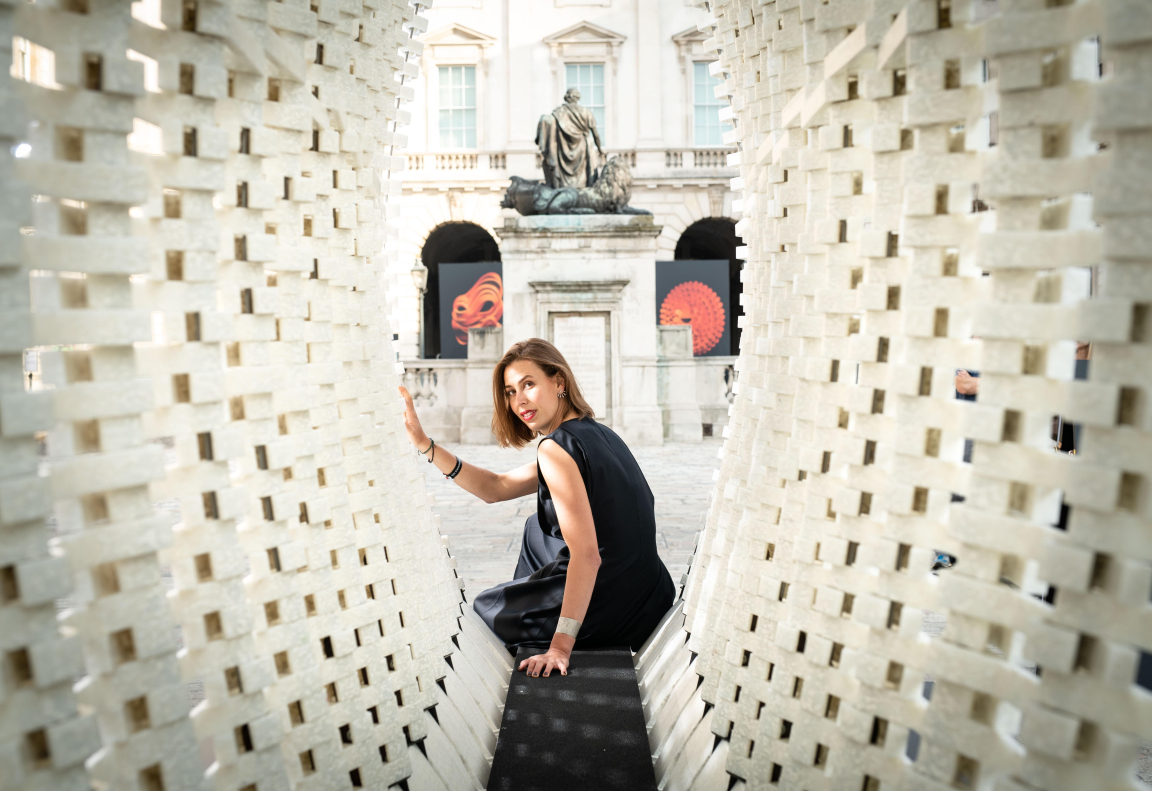
Palopò – Guatemala
Palopò shows how a project to paint a whole town in vibrant patterns inspired by their ancestral textile patterns is transforming its economy and instilling hope for its future.
Guatemala’s installation tells the story of Pintando Santa Catarina Palopò – an initiative that seeks to transform an impoverished town on Lake Atitlán by turning it into a monumental artwork. The design efforts were led by designer Diego Olivero from Olivero & Bland Studio, a team of designers, architects and local leaders have worked with the community to paint the town’s 800 houses using patterns inspired by local textiles.
The intention is to boost tourism by creating a unique and beautiful townscape as well as engendering a sense of civic pride. The floating installation of contemporary geometric forms resemble the multi-coloured houses of the town designed and developed by Diego Olivero from Olivero Bland Studio while a textile mobile, designed by Zyle using repurposed local textiles, hints at the volcanic mountains that surround it.
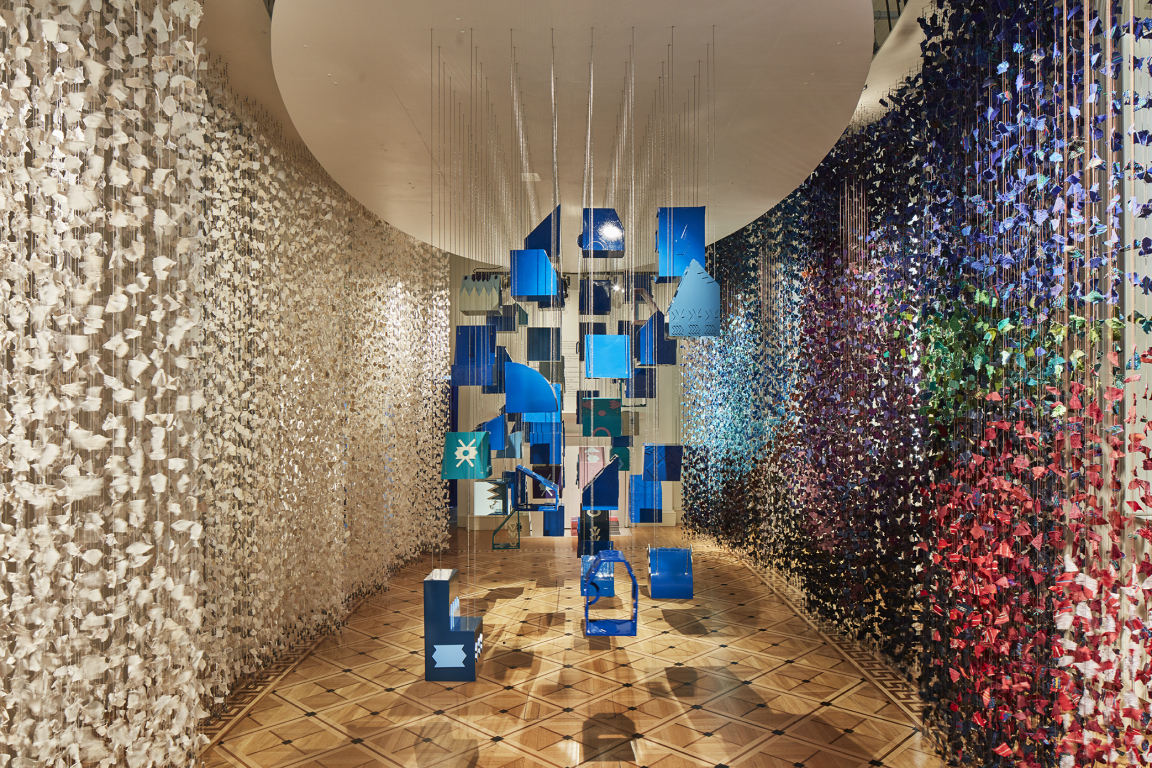
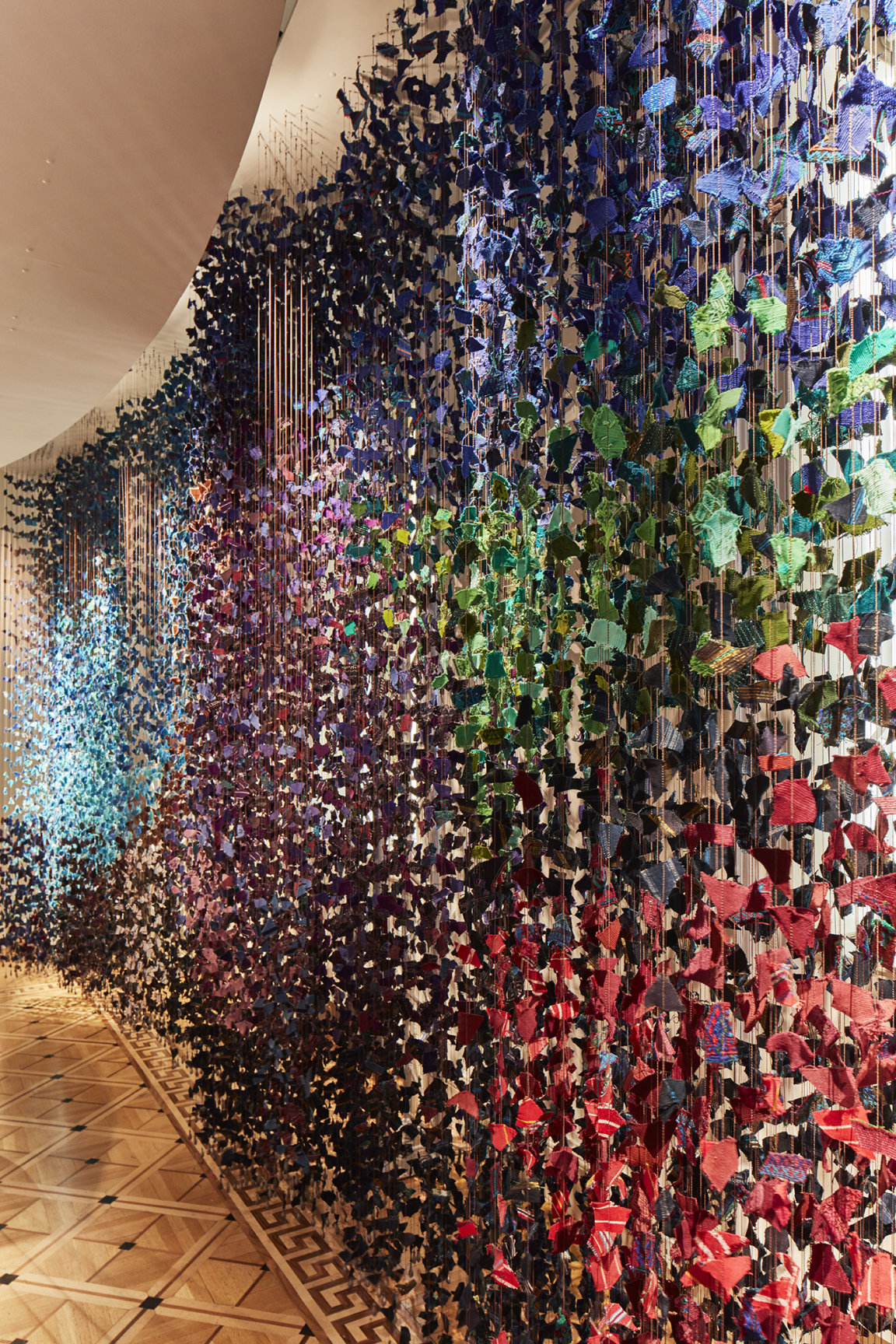
State of Indigo – India
As mentioned previously, State of Indigo illuminates the dark history of indigo farming, a process that is emotionally entwined with both the country's present and the tyranny of its colonial past.
The Indian pavilion explores the emotional charge of indigo, a natural colour created from the Indigofera plant, which has become synonymous with India’s identity – used to dye fabric, repel insects, treat ailments, disinfect, ward off spirits and even to decorate an entire city. But it also became inextricably linked with colonial trade and slavery. Indigo has become a symbol of India’s emotional plight, representing a process of catharsis for a nation whose invisible histories are being unravelled.
The installation takes you to the labour-intensive setting of the indigo farms where workers are forced to make natural indigo dye. A fully immersive space that sounds and smells like the earthy process.
Although it takes its cue from the past, the Indian pavilion reaches out to the present. Indigo has been democratised in the everyday, from its use in denim to the glow of television blue.
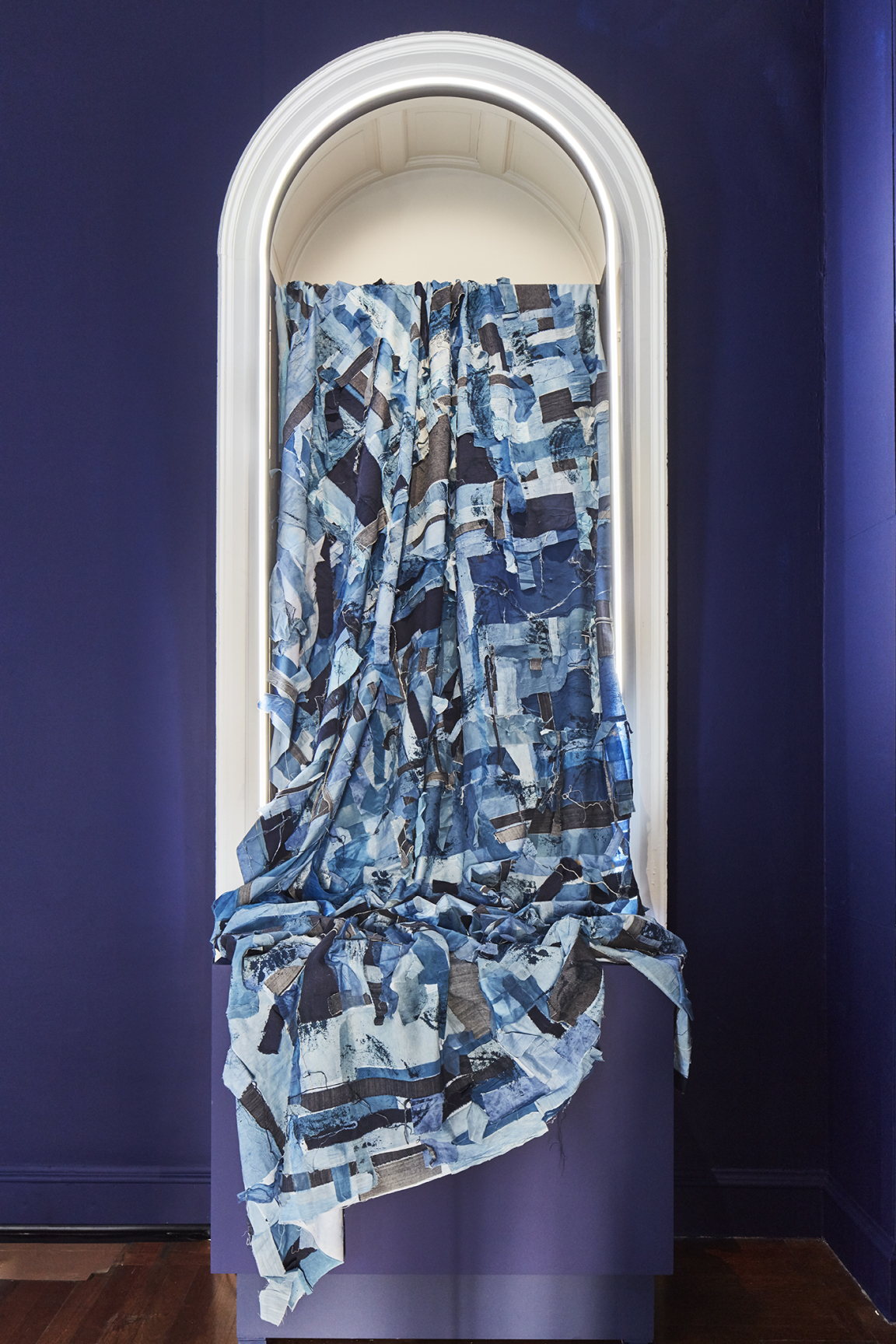
Matter to Matter – Latvia
By inviting us to leave fleeting messages in a wall of condensation, Matter to Matter explores the transience of emotions and the ways in which nature reclaims the marks we leave on it.
In Matter to Matter, Arthur Analts of Variant Studio was inspired by his native city of Riga and its surrounding forests – which cover more than half of the country. Due to its proximity to the Baltic Sea, Riga has its own unique climate, with a constant humidity that often leads to condensation. Analts has recreated this using a large green-glazed surface as an interactive platform for the transition of matter to matter: gas to liquid.
Each visitor is encouraged to leave a message in the glass – an expression of emotion that will disappear within minutes. It is a statement about culture and transience, and the ways in which nature can cover over human traces.
The installation is a serene, meditative space; a scent of Latvian nature, redolent of the country’s sprawling forests, and a large bench made from the typical trees that grow in Latvia add sensory elements to the continuous glass wall. At the same time, the apparent simplicity of the design conceals a sophisticated technological solution, reflecting a new, entrepreneurial generation of Latvians who combine respect for nature with a curiosity for technology.
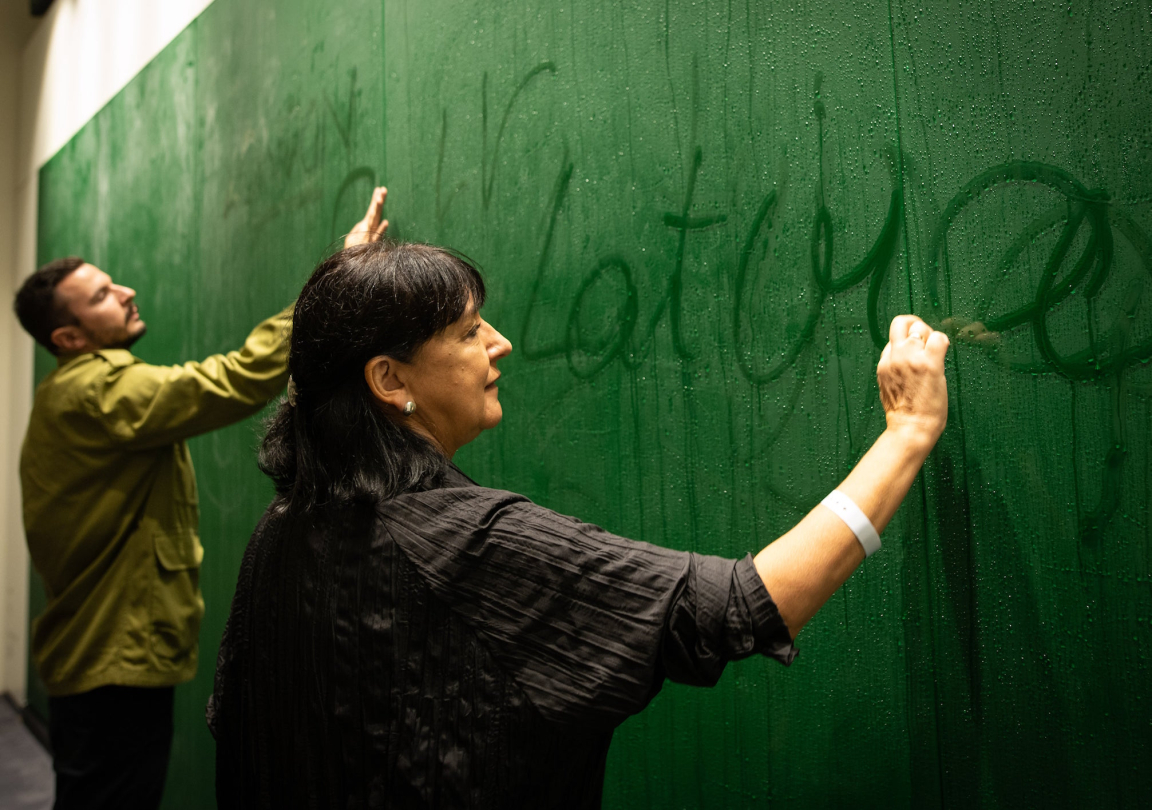
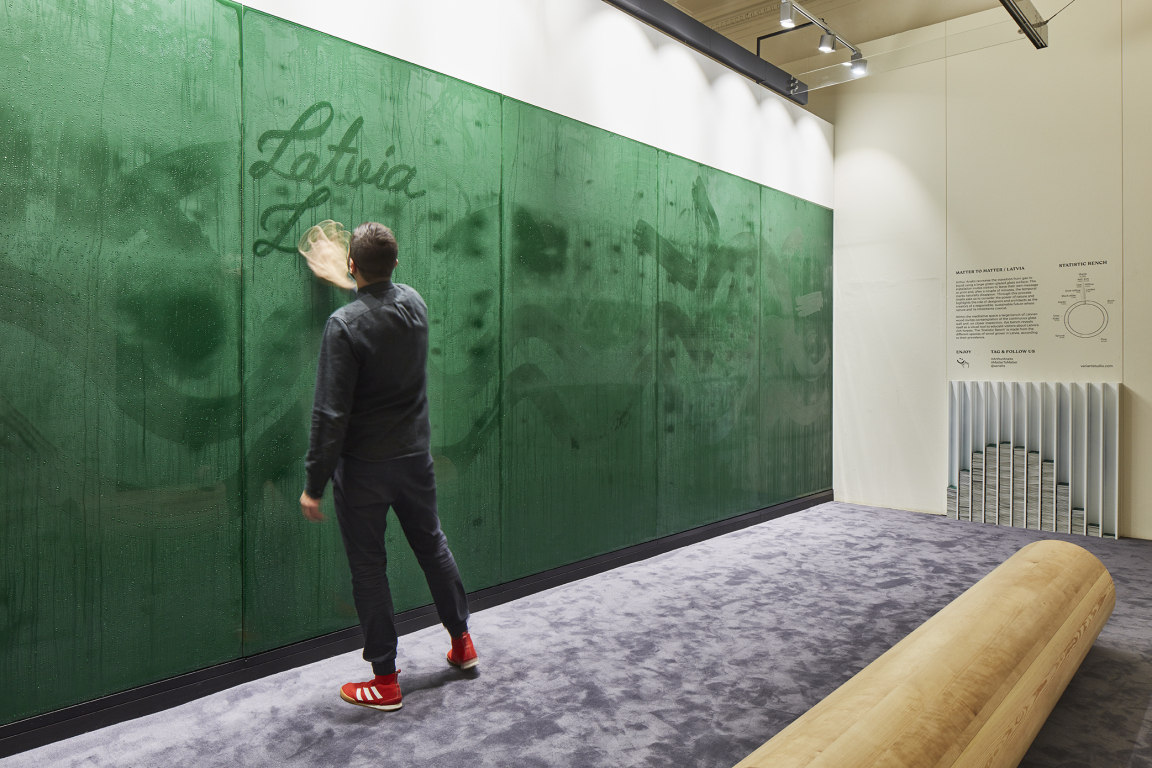
The Silent Room - Lebanon
The Silent Room is an urban intervention that proposes public shelters where people can freely rest, insulated from the noises of the city and other "sensorial aggressions".
"Silence is becoming a commodity for the privileged," says designer Nathalie Harb. To live in an urban environment is to be subject to a torrent of information and distraction, while public space is disappearing in a relentless wave of privatisation. The Silent Room responds to this context, providing a cocoon-like space isolated from the city’s overstimulating noise. Offering the luxury of silence to everyone, regardless of background or status. It redresses the sonic inequity within the contemporary urban landscape.
You enter a perforated brick and timber tower and ascend a staircase to the wooden upper level, which houses the Silent Room. The light inside is very dim, providing the absolute minimum of visual information, with the aim that you'll feel peaceful when you leave.
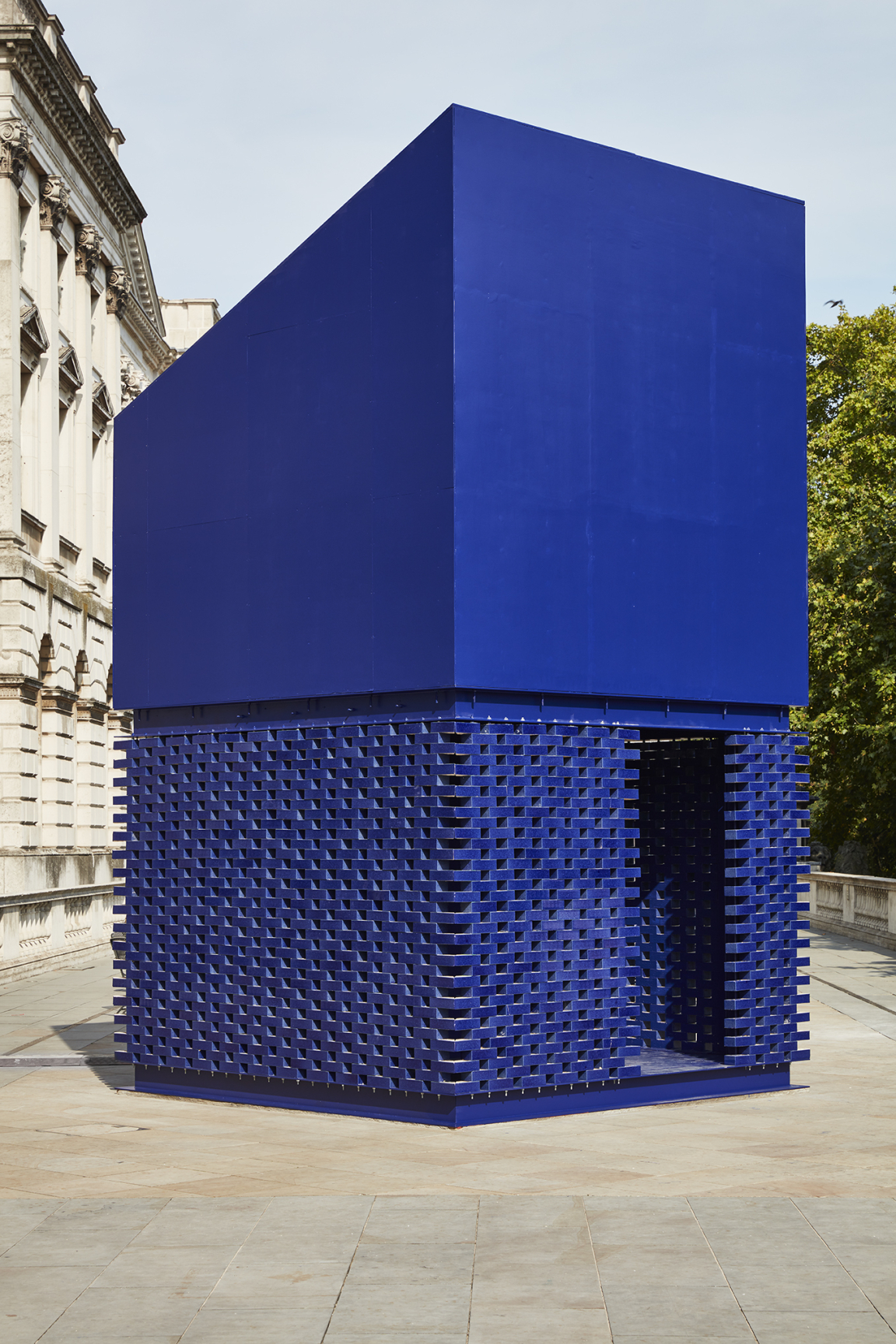
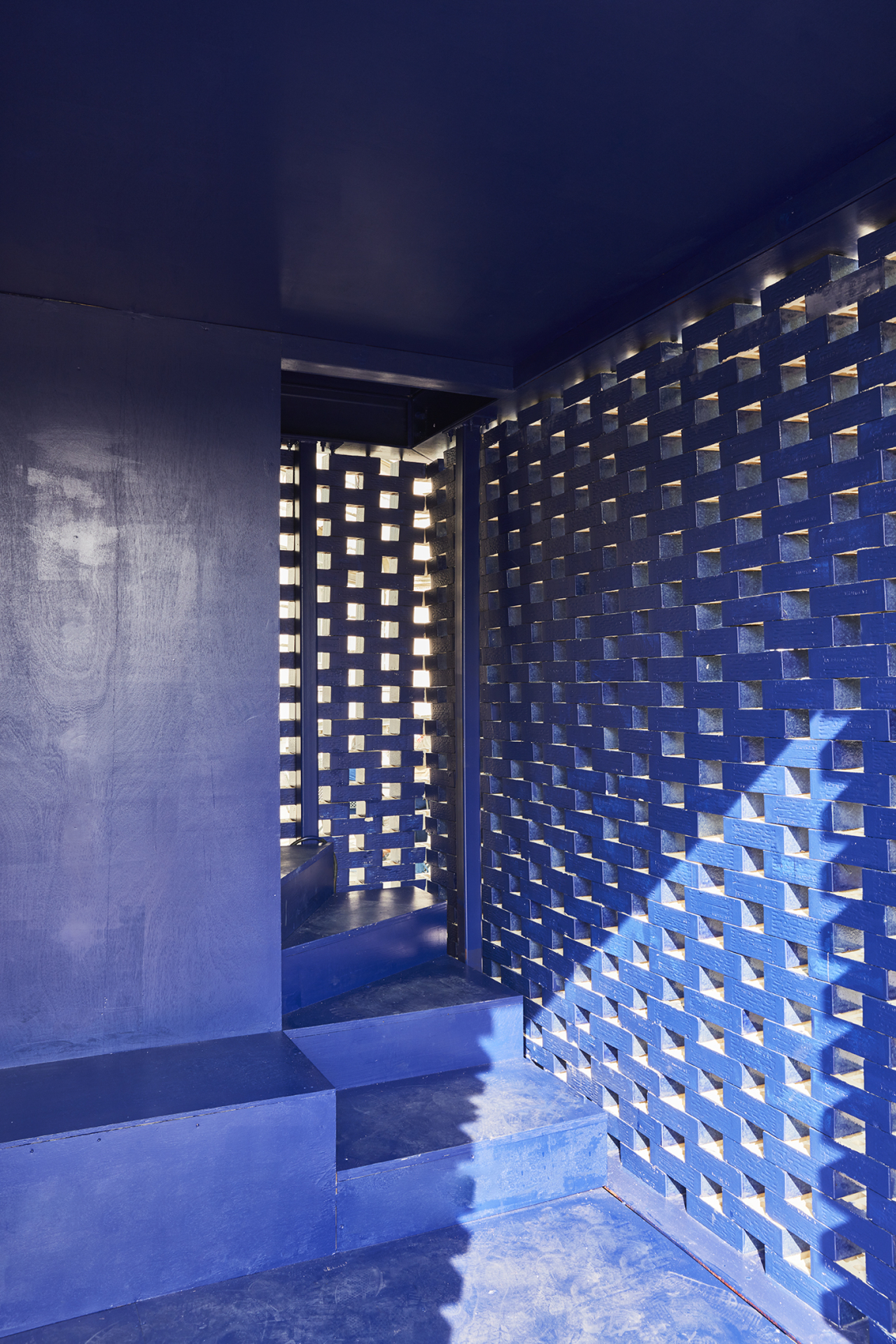
housEmotion – Turkey
Tabanlıoğlu Architects’ installation considers the emotional meaning of home in an age of increasingly transient living. The meaning of home for a person may simply be a smartphone with a full memory. Or it may be something more fundamental to our sense of self – Tabanlıoğlu also reference the psychoanalyst DW Winnicott and his groundbreaking work on childhood development, Home is Where We Start From.
Tabanlıoğlu’s pavilion starts with the most elemental idea of a house: a cubic form. This is created using a series of white rods, a simple border demarcating the limits of the home. The gaps between the rods lend a semi-transparency to the structure, drawing visitors in but also allowing the home to dissolve into the wider environment. The walls, perhaps even the home itself, are seen to be illusory.
Once you step inside the structure, it again takes on the homely role of a shelter. A divan is placed in the heart of the space, which Tabanlıoğlu describe as being “like a mother’s lap”. It is a place where you will want to spend time, relax and meet new people.
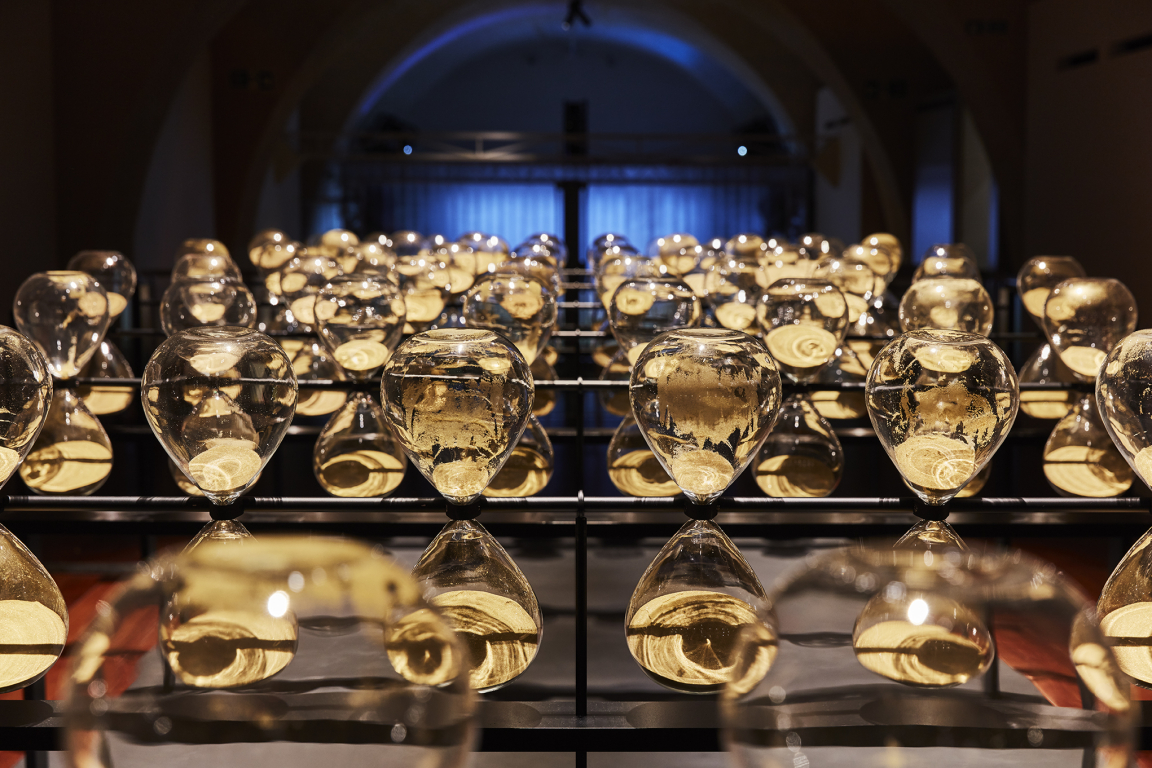
From one hour to a whole day immerse yourself in London Design Biennale 2018. Tickets are on sale via Somerset House.
